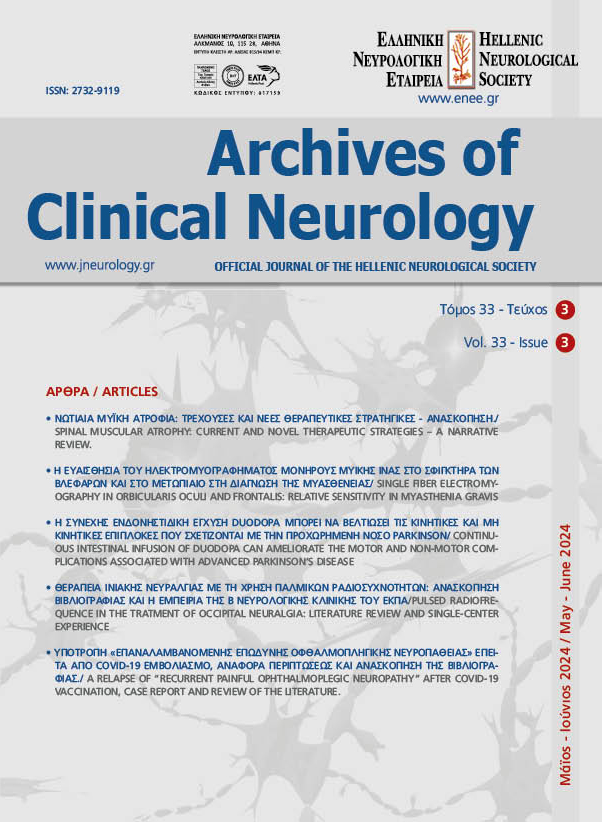SPINAL MUSCULAR ATROPHY: CURRENT AND NOVEL THERAPEUTIC STRATEGIES – A NARRATIVE REVIEW
A narrative review.
Keywords:
Spinal Muscular Atrophy, onasemnogene abeparvovec, gene therapy, antisense oligonucleotide, nusinersen, risdiplamAbstract
Spinal Muscular Atrophy (SMA) is a rare genetic disorder characterized by the progressive degeneration of motor neurons in the spinal cord, leading to muscle weakness and atrophy. This condition is primarily caused by mutations in the survival motor neuron 1 (SMN1) gene, which plays a crucial role in the maintenance and function of motor neurons. SMA disease manifests itself within a spectrum of clinical severity, that is associated with the compensatory function of SMN2 protein, and is classified into five subtypes: type 0 (congenital), type I (Werdnig-Hoffmann disease), type II (Dubowitz disease), type III (Kugelberg-Welander disease), and type IV (adult-onset). Until recently, treatment was only symptomatic and included respiratory support, nutritional support, physiotherapy, orthopedic treatment of complications. However, during the last decade, several disease modifying therapies have been approved and are now available, including onasemnogene abeparvovec, nusinersen, and risdiplam. In this era, when available SMA-specific treatment options are actively expanding, increased clinical suspicion and prompt and accurate diagnosis of SMA (including neonatal screening programs) are critical for the early initiation of individualized treatment and change in the prognosis of SMA patients.


